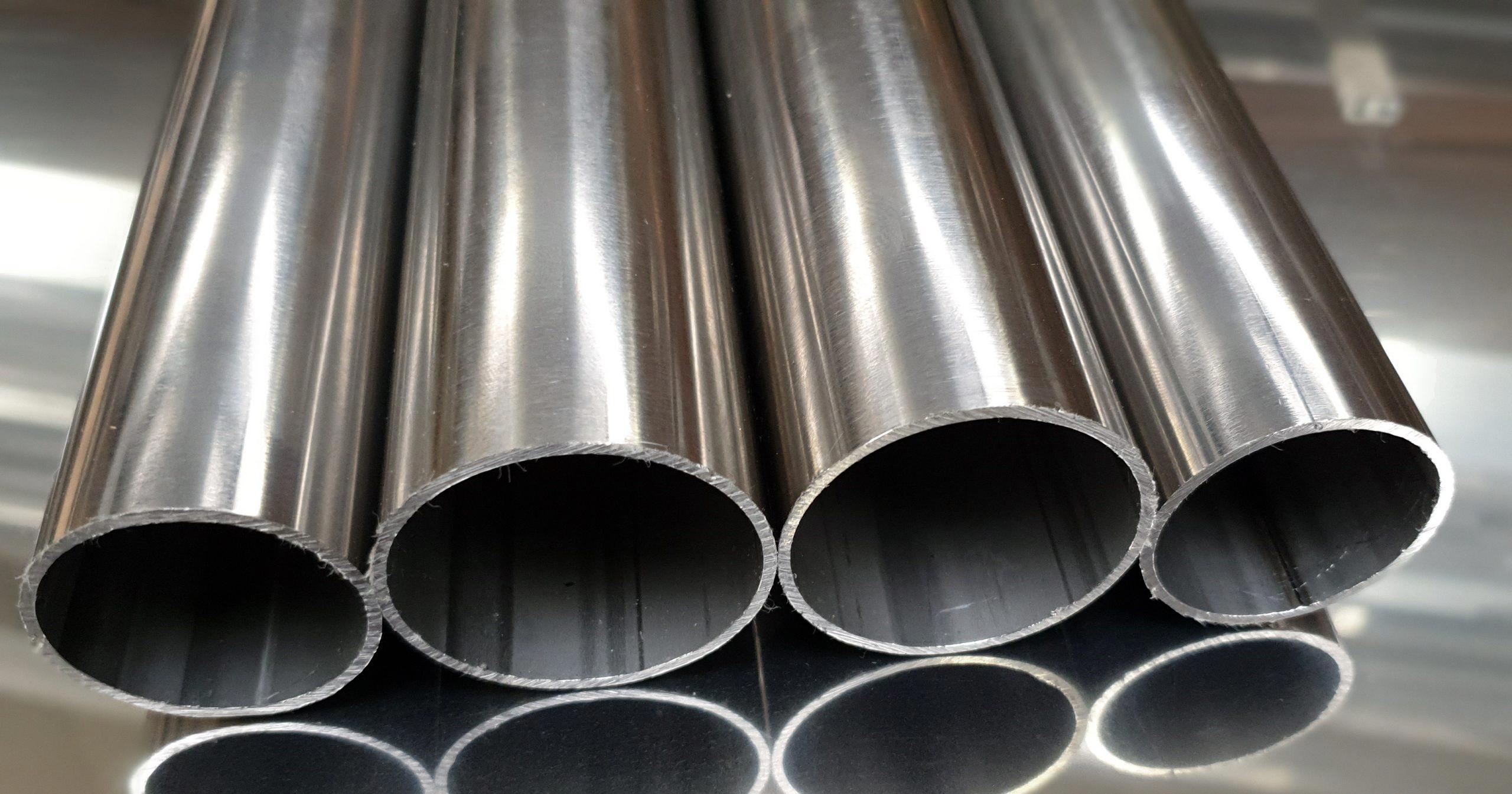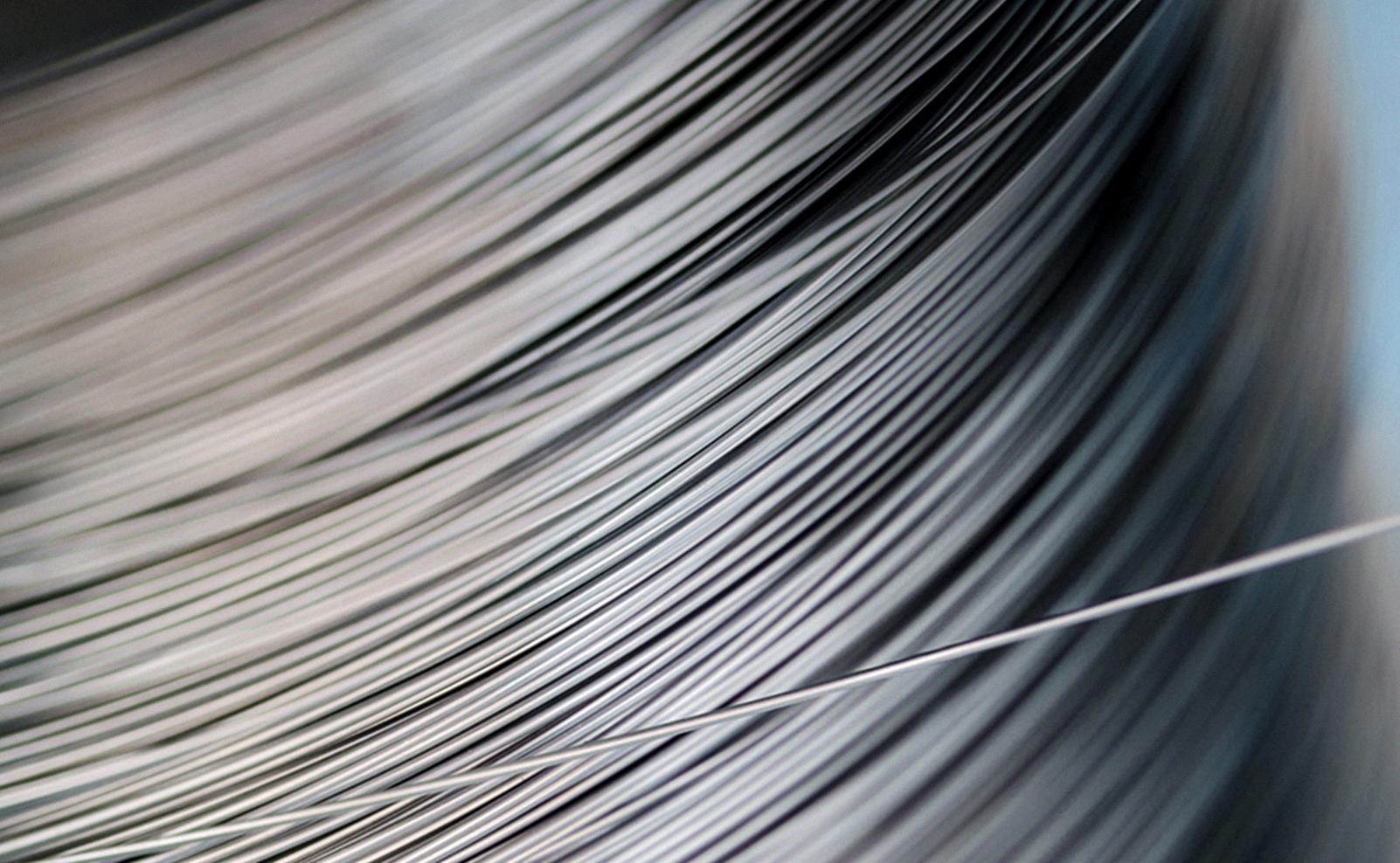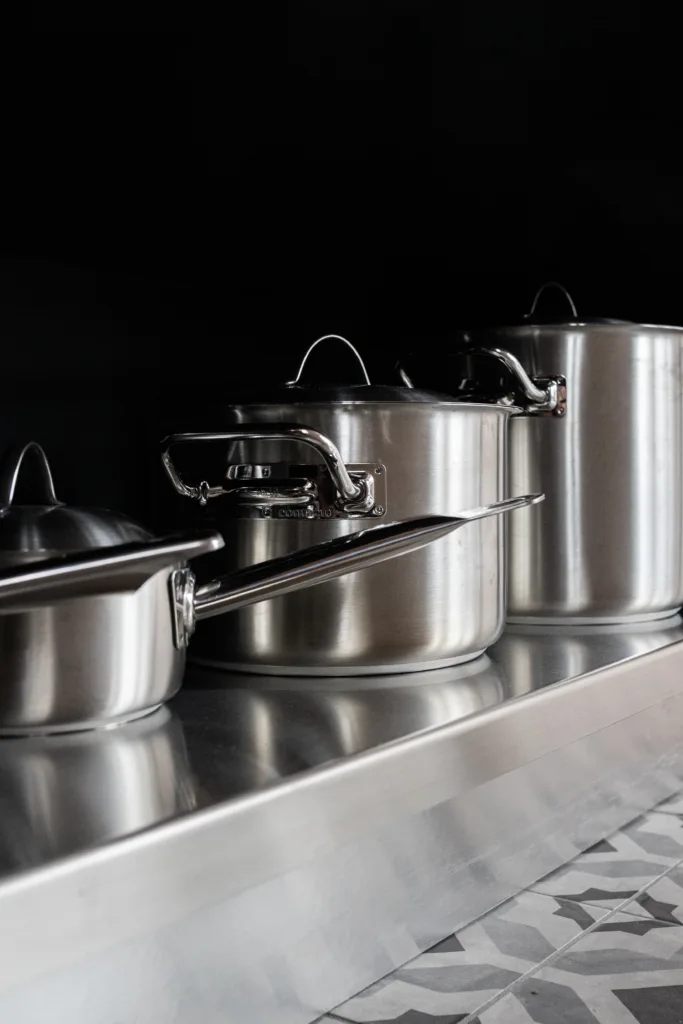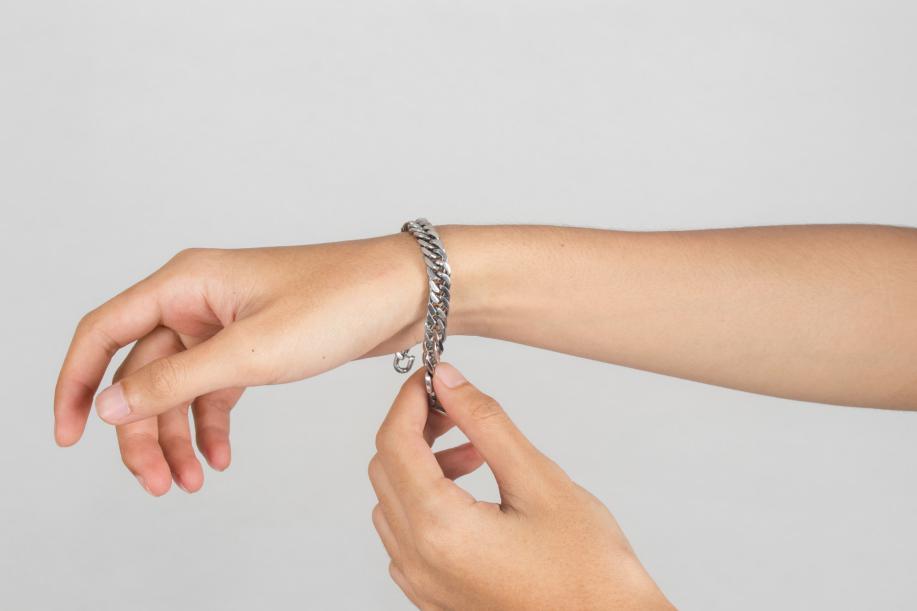Stainless steel is a popular material used in the production of a wide range of products, including jewelry, kitchen equipment, and even building materials. It is known for its durability, resistance to corrosion, and sleek, modern appearance. However, many people have concerns about whether stainless steel can turn green over time, especially in jewelry.
Firstly, it is important to understand that stainless steel does not contain copper, whch is the primary metal responsible for turning green. When copper reacts with the oils in our skin or environmental factors, it can form a green tarnish that can cause skin discoloration. Therefore, with stainless steel, there is no risk of the metal itself turning green.
However, it is possible for stainless steel jewelry to develop a greenish hue over time. This is caused by the formation of chromium oxide (Cr2O3), which occurs when there is too much oxygen and/or moisture present. This is not a manufacturing defect or fault, but rather a natural chemical reaction that can occur with any metal that contains chromium.
Fortunately, there are several steps you can take to prevent your stainless steel jewelry from turning green. Firstly, avoid exposing it to harsh chemicals such as bleach or ammonia, as these can cause discoloration. Additionally, it is important to keep your jewelry dry and avoid exposing it to prolonged periods of moisture or humidity.
One effective way to prevent your stainless steel jewelry from turning green is to coat it with a layer of transparent enamel, such as nail polish. This creates a barrier between the metal and your skin, preventing the chemical reaction that causes discoloration. However, it is important to note that this coating will eventually wear off over time and may need to be reapplied periodically.
Stainless steel itself does not turn green, but it is possible for stainless steel jewelry to develop a greenish hue over time due to the formation of chromium oxide. By taking proper care of your jewelry and coating it with a layer of transparent enamel, you can prevent discoloration and keep your stainless steel looking sleek and stylish for years to come.
The Causes of Green Discoloration on Stainless Steel
Stainless steel may turn green due to the formation of chromium oxide (Cr2O3) on its surface. This occurs when there is too much oxygen and/or moisture present. The green color is a result of the oxidation process, which is a natural occurrence and not a manufacturing defect or fault. It is important to note that while stainless steel is known for its excellent corrosion resistance, it is not completely impervious to rust or oxidation. Regular cleaning and maintenance can help prevent the formation of chromium oxide and keep your stainless steel looking its best.

Source: 1stchoicemetals.co.uk
Will Showering with Stainless Steel Cause It to Turn Green?
Stainless steel will not turn green in the shower. This is because stainless steel is an alloy made of iron, chromium, and other metals, but it does not contain copper, which is the primary metal that reacts with moisture, oils, and salts to form a green tarnish. As a result, stainless steel is highly resistant to corrosion and does not easily tarnish or change color, even when exposed to water or other harsh environmental factors. Therefore, you can safely wear stainless steel jewelry or use stainless steel fixtures in your shower without worrying about them turning green.
Can Stainless Steel Be Worn in the Shower?
You can wear stainless steel jewelry in the shower without worrying about any major damage. Stainless steel is a durable and corrosion-resistant metal that can withstand exposure to water, making it ideal for use in jewelry. The metal’s resistance to rust and tarnish means that it won’t bcome discolored or lose its shine over time, even with frequent exposure to water.
However, it’s important to note that while water won’t cause any harm to stainless steel, harsh chemicals can. So, if you plan to wear your stainless steel jewelry in the shower, it’s best to avoid using any soaps, shampoos or other cleaning products that could potentially damage the metal. Additionally, it’s a good idea to dry your jewelry thoroughly after your shower to prevent any water spots or mineral buildup from forming on the surface. as long as you take proper care of your stainless steel jewelry, it should be safe to wear in the shower and other wet environments.
Preventing Skin Discoloration from Wearing Stainless Steel Jewelry
Stainless steel is a popular metal used in jewelry making due to its durability and affordability. However, it can sometimes leave a green mark on the skin, which is caused by a reaction between the metal and the natural acids in the skin. To prevent this from happening, there are several ways to keep stainless steel from turning your skin green.
Firstly, you can try coating the stainless steel jewelry with a layer of clear nail polish. The nail polish acts as a barrier between the metal and the skin, preventing the chemical reaction that causes the green mark. Simply apply a thin layer of nail polish to the metal surface, allow it to dry completely, and then wear the jewelry as usual.
Another method is to clean the jewelry regularly with a mild soap and water solution. This helps to remove any dirt or oil buildup that can contribute to skin irritation and discoloration. After cleaning, make sure to dry the jewelry thoroughly to prevent any moisture from getting trapped between the metal and the skin.
Lastly, you can also opt for hypoallergenic stainless steel jewelry, which is specially designed to be less reactive with the skin. Look for jewelry that is labeled as hypoallergenic or surgical grade, as tese are typically made with higher quality materials that are less likely to cause skin irritation or discoloration.
In summary, to keep stainless steel from turning your skin green, you can coat the metal with clear nail polish, clean the jewelry regularly, and opt for hypoallergenic stainless steel jewelry. By following these simple tips, you can enjoy your stainless steel jewelry without any unwanted skin discoloration.
Does Stainless Steel Rust or Remain Resistant to Corrosion?
Stainless steel is an alloy of various metals, including iron, carbon, chromium, and nickel. It is known for its durability, strength, and corrosion resistance. The layer of chromium in stainless steel reacts with oxygen to form a thin, invisible layer of chromium oxide on the surface of the metal. This layer acts as a barrier, preventing any furthr oxidation of the metal, which is the primary cause of rusting.
Therefore, stainless steel does not rust, and it is highly resistant to corrosion. However, in some rare cases, stainless steel can corrode, but this occurs when the metal is exposed to harsh chemicals, such as acids or chlorine. In such a case, the protective layer of chromium oxide is compromised, and the metal can start rusting.
Regarding the greenish color that some metals can develop, it is not a problem with stainless steel. This greenish color result from a process called patina, which is a natural corrosion process that happens over time. Patina is common in copper and bronze, but it does not occur in stainless steel because of its resistance to corrosion.
Stainless steel is a reliable and durable metal that does not rust or go green. Its unique properties make it an excellent choice for a wide range of applications, including jewelry making, kitchen appliances, and medical equipment.

Source: bsstainless.com
How Long Does It Take for Stainless Steel to Tarnish?
Stainless steel does not tarnish in the same way that silver or other metals do. However, it can still become discolored or stained over time. This can happen if the stainless steel is exposed to harsh chemicals, abrasive materials, or if it is not properly cleaned and maintained.
In general, stainless steel is highly resistant to corrosion and discoloration, and it can maintain its appearance for many years with proper care. However, the exact amount of time it takes for stainless steel to tarnish or become discolored will depend on a variety of factors, including the environment it is in, how oftn it is cleaned, and how it is used.
For example, stainless steel jewelry that is worn frequently and exposed to sweat, perfumes, and other chemicals may begin to show signs of wear and tear within a few months or years. On the other hand, stainless steel kitchen appliances or outdoor furniture that are well-maintained and protected from harsh weather may last for decades without showing any signs of discoloration or corrosion.
Stainless steel is a durable and long-lasting material that can maintain its appearance for many years with proper care and maintenance. Whether you are using stainless steel for jewelry, appliances, or other applications, it is important to take care of it properly in order to ensure that it lasts as long as possible.
The Benefits of Wearing Stainless Steel Everyday
You can wear stainless steel jewelry everyday without worrying about damage or wear and tear. Stainless steel is a highly durable and corrosion-resistant metal that can withstand the rigors of daily use. It is resistant to tarnishing, scratching, and fading, making it an ideal material for jewelry that is meant to be worn on a regular basis. Additionally, stainless steel is hypoallergenic, making it a good choice for people with sensitive skin or allergies to other metals. It is important to note, however, that while stainless steel is highly resistant to damage, it is not completely indestructible, and may stll scratch or show signs of wear over time. However, with proper care and maintenance, stainless steel jewelry can last for many years and continue to look great even with daily wear.
Does Water Damage Stainless Steel?
Stainless steel is a highly durable and corrosion-resistant material that can withstand exposure to water, including fresh water and even seawater, for extended periods of time. However, it is important to note that stainless steel can, in fact, rust and corrode if it is continuously exposed to water and other corrosive elements over time.
The key to maintaining the integrity of stainless steel is to ensure that it is properly maintained and cleaned on a regular basis. This involves usng the correct cleaning products and techniques to remove any dirt, grime, or other contaminants that may accumulate on the surface of the steel.
In addition to regular cleaning, it is also important to protect stainless steel from exposure to harsh chemicals and other corrosive substances that can cause it to deteriorate over time. This may involve applying protective coatings or using specialized cleaning products that are designed to prevent corrosion and rusting.
Ultimately, while stainless steel is highly resistant to water damage, it is not completely impervious to corrosion and rusting. By taking proper care of your stainless steel products and ensuring that they are regularly maintained and cleaned, you can help to ensure that they remain in top condition for years to come.
The Lifespan of Stainless Steel
Stainless steel is known for its exceptional durability and longevity. It is designed to withstand harsh environmental conditions, high temperatures, and exposure to chemicals and corrosive agents. As a result, stainless steel products can last for a very long time. On average, the lifespan of stainless steel is estimated to be arond 20 years, but it can last much longer than that. In fact, there are many examples of stainless steel products that have been in use for a century or more. The key to the longevity of stainless steel is its resistance to corrosion and rust, which helps to prevent damage and degradation over time. Additionally, stainless steel is very strong and resistant to impact, making it an ideal material for many applications that require durability and longevity. if properly maintained, stainless steel can last for many years, making it a great investment for many industries and applications.

Avoiding Damage to Stainless Steel
Stainless steel is a popular material for appliances, fixtures, and other household items due to its durability and sleek appearance. However, it is important to know that certain cleaning products can damage stainless steel if used incorrectly. Here are seven cleaning products you should avoid using on stainless steel:
1. Harsh abrasives: Scrubbing your stainless steel with harsh abrasives like steel wool or abrasive pads can scratch the surface and leave it looking dull.
2. Scouring powders: Similarly, scouring powders like Comet or Ajax can scratch the surface of your stainless steel and damage the finish.
3. Bleach and other chlorine products: Bleach and other chlorine-based cleaners can discolor and corrode stainless steel, so it’s best to avoid using them altogether.
4. Glass cleaners that contain ammonia: Glass cleaners like Windex that contain ammonia can leave streaks and damage the protective coating on your stainless steel.
5. Tap water, especially if yours tends to be hard water: Hard water can leave mineral deposits on your stainless steel, wich can be difficult to remove. It’s best to use clean distilled or filtered water when cleaning stainless steel.
6. Oven cleaners: Oven cleaners are designed to break down tough grease and grime, but they can also damage stainless steel surfaces. Avoid using oven cleaners on your stainless steel appliances.
7. Steel wool: Steel wool is a popular cleaning tool, but it should never be used on stainless steel. It can scratch the surface and leave behind small particles that can rust over time.
By avoiding these seven cleaning products, you can keep your stainless steel looking shiny and new for years to come. Instead, use a gentle cleaner specifically designed for stainless steel and a soft cloth or sponge to avoid damaging the surface.
Comparing the Benefits of Stainless Steel and Sterling Silver
When it comes to choosing between stainless steel and sterling silver, it ultimately depends on your personal preferences and needs. Both materials have teir own set of advantages and disadvantages.
Stainless steel is a highly durable and corrosion-resistant metal that can withstand daily wear and tear. It is also less expensive than sterling silver, making it a more cost-effective option. Stainless steel doesn’t tarnish or rust, which means it requires less maintenance than sterling silver. Additionally, stainless steel is hypoallergenic, making it a great choice for people with sensitive skin.
On the other hand, sterling silver has a unique natural finish and an elegant look that many people find appealing. It is also a precious metal, which can make it a better investment in the long run. Sterling silver is softer than stainless steel, which means it can scratch or dent more easily. However, it can also be polished to restore its shine.
Ultimately, the choice between stainless steel and sterling silver comes down to your personal preferences and priorities. If you want a piece of jewelry that is highly durable and low maintenance, stainless steel is the way to go. If you prefer a unique and elegant look, and don’t mind putting in a bit more effort to maintain it, sterling silver may be the better choice for you.
The Best Way to Clean Stainless Steel
Stainless steel appliances and surfaces are kown for their sleek and modern look, but keeping them clean and free of smudges and fingerprints can be a challenge. Fortunately, there are several effective at-home methods for cleaning stainless steel. One of the best ways is to add white vinegar to a clean spray bottle and spray down the stainless-steel surface. Next, use a microfiber cloth to wipe the surface clean, being sure to move in the direction of the grain to avoid leaving streaks. Once the surface is clean, you can apply a small amount of olive oil to a clean cloth and use it to buff the surface in the direction of the grain. This will help to restore the shine and protect the surface from future smudges and fingerprints. By following these simple steps, you can keep your stainless steel appliances and surfaces looking their best for years to come.
The Benefits of Using Stainless Steel for Jewelry
Stainless steel is a great material for jewelry for several reasons. Firstly, it is durable and long-lasting, wich means it can withstand most daily activities without getting damaged or scratched. This makes it an ideal material for jewelry that will be worn frequently. Secondly, it is affordable, making it accessible to a wider range of consumers. Additionally, stainless steel doesn’t tarnish, so it maintains its shine and appearance over time. This means that jewelry made from stainless steel looks good even with minimal maintenance. Moreover, it is hypoallergenic, making it safe for people with sensitive skin to wear. stainless steel is a versatile material that is a great option for those looking for affordable, durable, and low-maintenance jewelry.

The Effects of Metals on Skin Color
The metals that can turn skin green are copper, brass, and bronze. This green discoloration is caused by a chemical reaction between the metal and the oils and acids in our skin. When these metals come into contact with our skin, they can oxidize and produce a greenish substance called copper carbonate. This substance can then be absorbed into our skin, leaving a green tint behind. It’s important to note that not everyone will experience this reaction, as it depends on individual skin chemistry and how oten the metal is in contact with the skin. Jewelry made of precious metals like gold and silver are less likely to cause this reaction, as they do not contain copper, brass, or bronze.
Types of Jewelry That Do Not Turn Green When Wet
If you’re looking for jewelry that won’t turn green when wet, your best bet is to opt for pieces made from solid gold, gold filled, or sterling silver. These metals are knon for their durability and are resistant to tarnishing and discoloration, even when exposed to water or sweat. Additionally, they are hypoallergenic, making them a great choice for people with sensitive skin. It’s important to note that while gold plated jewelry may also resist tarnishing, it is not as durable as solid gold or gold filled jewelry and may eventually start to turn green or lose its color over time. if you want jewelry that will stand up to your active lifestyle and won’t turn green when wet, stick with solid gold, gold filled, or sterling silver pieces.
Conclusion
Stainless steel is a versatile and durable material that is widely used in many industries, including jewelry making. While it is resistant to corrosion, it can still be affected by environmental factors such as moisture and oxygen, leading to the formation of chromium oxide, which apears green in color. However, stainless steel does not contain copper, which is the main culprit behind the green tarnish that can occur on other metals. Therefore, stainless steel jewelry is a great option for those who want to avoid skin irritation and discoloration. It is also safe to wear in water and can be cleaned easily. If you want to prevent your stainless steel jewelry from turning green, you can apply a coat of transparent enamel or nail polish to create a barrier between your skin and the metal. stainless steel is a reliable and long-lasting material that offers both aesthetic appeal and functionality.
